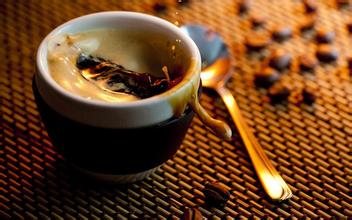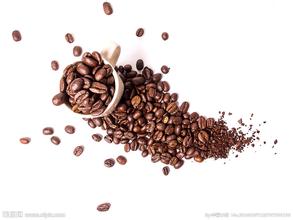Costa Rica Yellow Honey Coffee Flavor Description Processing Quality Taste Characteristics Grinding Scale Introduction
Introduction to the quality and taste characteristics of Costa Rican yellow honey coffee flavor description and grinding scale
Costa Rica is the country where coffee was first introduced into Central America. It has a long history and has a complete coffee organization from production to marketing system. Because it is located in the Central American Gorge, there are many volcanoes, it has the natural advantages of sunshine and land, and the climate is reconciled by Pacific and Atlantic currents and sea breezes at the same time, the coffee produced has the characteristics of local micro-climate and soil conditions, in terms of quality and quantity, Costa Rican coffee has always been recognized by the world, and has been rated as one of the world-class high-quality coffee. Costa Rican coffee has been cultivated for two hundred years. It was first planted on the slopes of the Poas and Barva volcanoes, today known as the Central Valley (Central Valley). The seven main coffee producing areas are distributed from northwest to southeast, along with the inland central plateau.
Costa Rican volcanic terrain with fertile volcanic ash, mild and suitable temperature, and stable and abundant rainfall is one of the reasons why coffee has become one of the main agricultural products in Costa Rica. The seven major producing areas are: Tarrzu, Tres Rios, Orosi, Central Valley, West Valley, Turrialba and Brunca.
Costa Rica has a long history of cultivating coffee, but in the past 10 years, it has become a trend in the new "dry" treatment method, collectively known as "honey treatment", which uses the scraper to adjust the scraping degree of the pulp. Output with the color from light to dark (white, yellow-red-white, yellow-red-black) and presents a "honey" from light to strong, with acidity, complex aroma and thick feeling. Each has its own depth and advantages. Located in the Naranjo producing area of the western West Valley region, the Herba processing Plant (Herbazu) is well known because it not only has its own coffee plantation, but also processes and produces raw beans for nearby estates and small coffee farmers.
San Juan Manor (Finca San Juanllo) coffee varieties are Villa sarchi, Caturra,Catuai, Bourbon, with an average elevation of 1600 meters. This microbatch is commissioned by a well-known Herbard processing plant to produce raw beans according to its excellent technology. From the bean phase, the bean body is full, fragrant, well-balanced, with almond and floral flavor.
Costa Rican coffee has always been regarded as a perfect type of classic flavor, balanced, clean and mild is his tone. San Juan Youzhuang, a processing plant in the western valley, comes from a famous orange county (Naranjo), and is famous for its excellent natural geographical conditions and excellent regional planting and management techniques. it has almost perfect classical flavor and lively citrus flavor in acidity. BlackBerry fruit aroma, acidity and taste thick, melon sweet taste smooth, drupe / micro-flower aroma, while the finish has a significant coffee flower aroma, is a taste of coffee full of Latin country style. Its flavor features brown sugar, floral aroma, almonds, black tea, oranges and sweet spices, mild acidity, syrup taste and a good finish.

Important Notice :
前街咖啡 FrontStreet Coffee has moved to new addredd:
FrontStreet Coffee Address: 315,Donghua East Road,GuangZhou
Tel:020 38364473
- Prev

Introduction of Coffee West Java Honey flavor description and taste
a. The picking and flotation process in the early stage of mechanical peeling (exocarp peeling) is similar to that of water washing, but the link of mechanical peeling is very different. The washing method requires the pulp to be removed to ensure its cleanliness, while the mechanical peeling process of honey treatment can adjust the caliber of the peeling machine to determine how much pulp to remove. The whole is divided into three categories, such as the following figure (from left to right): 1. Get rid of more than 50% fruit
- Next

Why does it smell like caffeine-- fine beans
Caffeine taste, however, if not professional or careful, no matter how good coffee beans will be destroyed in the hands of baristas, resulting in astringency, the reasons are as follows: first, the water temperature is too low, the extraction water temperature of Xiumen coffee is generally about 90 degrees, of course, there is no absolute standard for extraction water temperature, and it varies according to the practice and coffee beans, but interested friends might as well do an experiment with water below 80 degrees.
Related
- Guji coffee producing area of Guji, Ethiopia: Humbela, Shakiso, Wulaga
- What is the most expensive variety of Qiloso in BOP multi-variety group?
- How to store the coffee beans bought home?
- Why are Yemeni coffee beans so rare now?
- Ethiopian Sidamo all Red Fruit Sun Sun Santa Vini Coffee beans
- SOE is mostly sour? What does it mean? Is it a single bean? what's the difference between it and Italian blending?
- Is Italian coffee beans suitable for making hand-brewed coffee?
- How to choose coffee beans when making cold coffee? What kind of coffee beans are suitable for making cold coffee?
- Just entered the pit to make coffee, what kind of coffee beans should be chosen?
- Can only Japan buy real Blue Mountain Coffee? What are authentic Jamaican Blue Mountain coffee beans?

